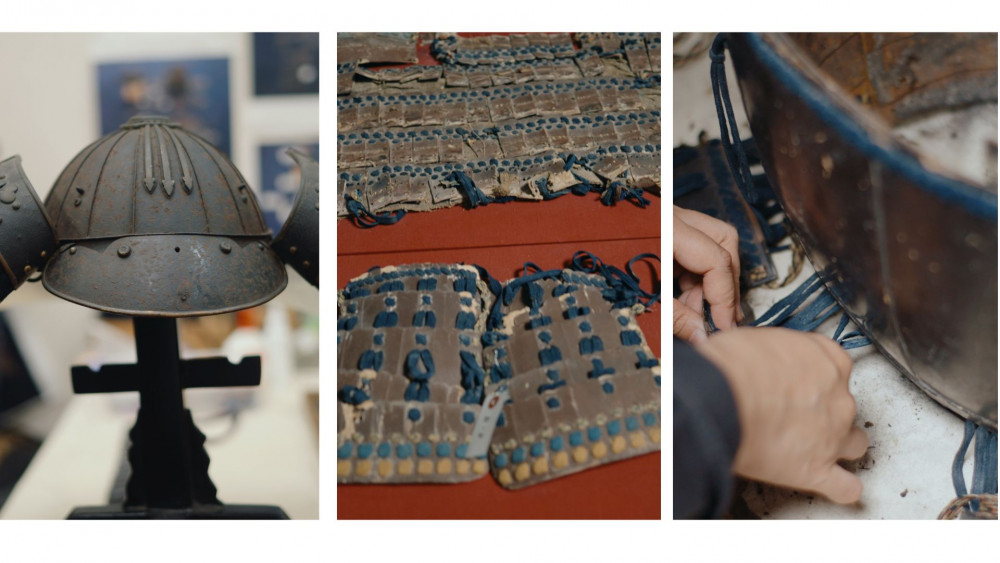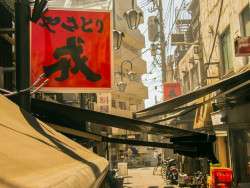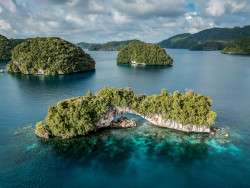
December 19, 2024

Forging Bonds: The Samurai Armor Restoration
The appearance and restoration of samurai armor in Malta
Three sets of samurai armor, discovered in a corroded and eroded state on the Island of Malta, are undergoing restoration. The documentary detailing this process, Forging Bonds: The Samurai Armor Restoration, follows a team of artisans at Miyaobi Oriental Arts, who returned the armor to its former refinement. “When I first encountered the story of this samurai armor and its potential to symbolize unity,” says director Irina Babanova, a designer and visual artist, “I felt a profound need to share it with the world.”
The Trailer for the Forging Bonds: The Samurai Armor Restoration Documentary
With the full documentary set to be released in spring 2025, this profound need remains unsated. However, there is much to look forward to learning. For example, during the restoration process at Miyaobi, artisans discovered that 19th-century metallurgical techniques, essential for crafting armor, in some ways matched—or even surpassed—modern understanding. This is especially so when considered within the technological constraints faced by armorers 160 years ago.
The techniques used in crafting the armor, thought by some to have been lost to the sands of time, were instead buried—only temporarily—in the sands of a Mediterranean island. These armors, along with the methods used to create them, narrowly avoided the fate now looming over the otsuzumi. Okura’s grim assessment of the instrument’s future makes it all too easy to envision a Forging Bonds sequel with the otsuzumi as its focal point. Perhaps the remarkable discovery and recovery of the armor should be seen less as a miracle and more as a cautionary tale.
Restoration and Rectification
“I do see the restoration as a kind of… rectification,” Pierre Bonello, Heritage Malta’s Exhibition Manager, explains. “It should’ve been preserved from the start. It was a gift from Japan.”

The gift originally arrived in Malta via the 1862 Bunkyu Mission, led by Takenouchi Yasunori. Sent by the Tokugawa Shogunate, the mission aimed to renegotiate the unfavorable treaties Japan had been forced to sign with various Western powers. This diplomatic endeavor included meetings with prominent figures such as President Abraham Lincoln. Yasunori’s delegation represented one of Japan’s earliest diplomatic missions to the West. This marked a significant moment in Japan’s introduction to the Occidental world. A world that, notably, included the small island of Malta.
“They could have even arrived in Malta by accident,” Bonello stated. Because of Malta’s opportune geographic positioning—next to Tunisia and so close to Italy’s boot tip it seems in danger of being kicked into the African continent—it soon became a frequent, if not incidental, waystation for those en route to Africa, Europe or the Middle East.
Art Rather than Armament
Did the armor influence the way they made armor in Malta? Did they learn anything from it or use it in any way? “No,” he continues, “because by this point, the armor was already out of style. It was already useless; there were guns by then. However, in Japan, it was seen as a status symbol. All the lords wore armor like these, even if it wouldn’t protect them.”

By the time of the Bunkyu Mission, the armor once worn by Japan’s great warriors was regarded much as it is today: art rather than armament. It was in this spirit that the set was gifted to Malta. It is for the sake of art—along with its cultural and historical significance—that it is now being restored. During our post-screener chat, a theory was floated among the audience to explain how easily the armor was originally discarded and forgotten after being gifted. From a functionalist perspective, the pieces simply didn’t serve much purpose. As Bonello explained, in the age of guns, armor designed to counter swords is, at worst, useless. At best, a relic in waiting.
The multi-pronged significance of the title becomes most clear. It refers both to the relationship between Japan and Malta, through the original Bunkyu Mission and the present-day repercussions of that meeting. “It is also the past and the present,” Babanova explains. “The artisans of today and their predecessors who originally made the armor. There are many, many meanings.”







